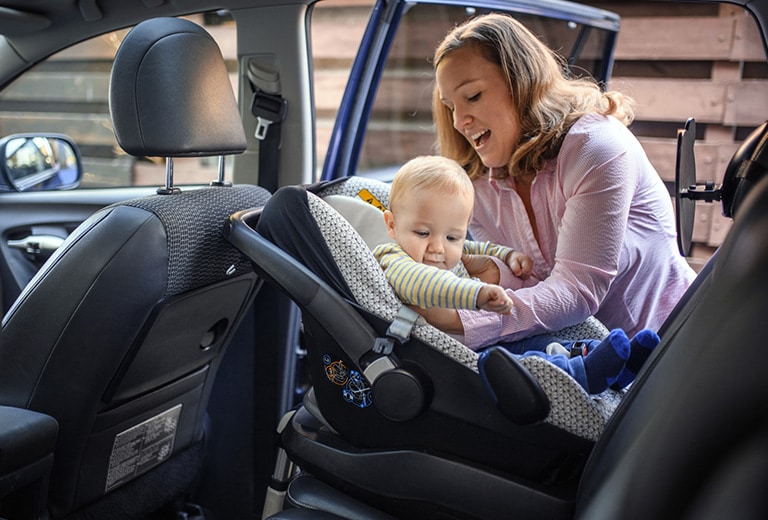Blog
441 results
Visualizando:
Todas
Innovations in child restraint systems
The constant search for innovations in child restraint systems means that new products with new features are introduced every year. We help you stay focused on the important issues.
We present our most socially-minded awards
Once again, this year’s edition of our Social Awards came to an end with the prizes being presented by H.M. Queen Sofia, who recognized individuals, initiatives and organizations that, through their work, improve the world in which we live.
Fundación MAPFRE recognized for its patronage work
Ignacio Baeza, vice-president of Fundación MAPFRE, received the award for Best Patronage at the Ars Magazine Art and Business Awards.
The ISOFIX system, a little bit of history
The first ISOFIX prototype, which was very different from the one we know today, was presented in 1991. From that time to now, it has been evolving to offer children greater safety when traveling in a vehicle.
Make a family mobility plan
Buying a child restraint system is a headache for many families as it is difficult to choose the right product. We suggest you make a mobility plan to find out which CRS is right for you both now and in the future.
Should you use a pregnancy seatbelt cushion?
The use of pregnancy cushions has become widespread in recent years, but this does not mean that it is a good solution. We look at whether it is beneficial or even advisable for the safety of both the mother and the fetus.
Would you rather face zombies or a reckless driver?
The heroine of the winning ad in the Look Both Ways contest, organized by Fundación MAPFRE in collaboration with the Massachusetts Department of Transportation (MassDOT), is very sure: she would rather face the zombies.
Resolve your doubts about Fundación MAPFRE’s 1st +Rural Call within the framework of the ESF+
If you would like to apply for one of the grants from Fundación MAPFRE’s 1st +Rural Call within the framework of the ESF+, to develop a social initiative in rural or “empty” Spain, we can help you with the process. We invite you to participate in the session to clarify any doubts, which will be held on Thursday 13 July.
Are hard-hitting or soft traffic campaigns more effective?
The aim of the study Evaluation of traffic and road safety campaigns, conducted by Fundación MAPFRE and Bitbrain, is to measure the emotional impact generated by traffic campaigns on the public, especially at an unconscious level, and what differences there are between hard-hitting campaigns and soft, informative campaigns.
Children should travel safely in any vehicle
One of the most common questions regarding child restraint systems is which child restraint system should be used in the cars of family members or friends who may sporadically carry our children. The answer to this question will depend on your perception of risk.
The often-overlooked variable in CRSs
One of the big ‘gaps’ in child safety when it comes to car travel is the relationship between child restraint systems and vehicle seats. Here we tell you why.
Fundación MAPFRE’s 1st Call for +Rural Grants within the framework of the ESF+ is now open
From June 23 to August 18 you can apply for Fundación MAPFRE’s +Rural Grants, co-financed by the European Social Fund Plus (ESF+), the main European instrument for investing in people, with the aim of revitalizing the rural environment and so-called Empty Spain.
Rotating child restraint systems
If you want a child restraint system with this versatility, it is best to choose a premium product, or one with proven quality in consumer testing.
Ban on the sale of child restraint systems approved under Regulation 44.04
From September 2023, it will no longer be possible to import systems approved under Regulation 44 from markets outside the European Union, and any products that are already in Europe will have one year, until September 2024, to be sold.
Touch, open, look: a magazine for the senses
We are launching a new magazine, la fundación, for an audience interested in culture and the challenges of our society.
Winners of the Fundación MAPFRE Social Innovation Awards
The sixth edition of our awards has concluded with the grand final. Meet the three winners: Acceleradora Unoentrecienmil and LUP, from Spain, and the US project TASL (This App Saves Lives).
Rethinking mobility
Imagine a city of the future, where mobility is safe, healthy and sustainable and public spaces are places to coexist, to share respectfully. To mark the UN’s 7th Global Road Safety Week, let’s make this dream come true; let’s rethink mobility.

















